Irish News move marks the end of Belfast's Fleet Street
- Published
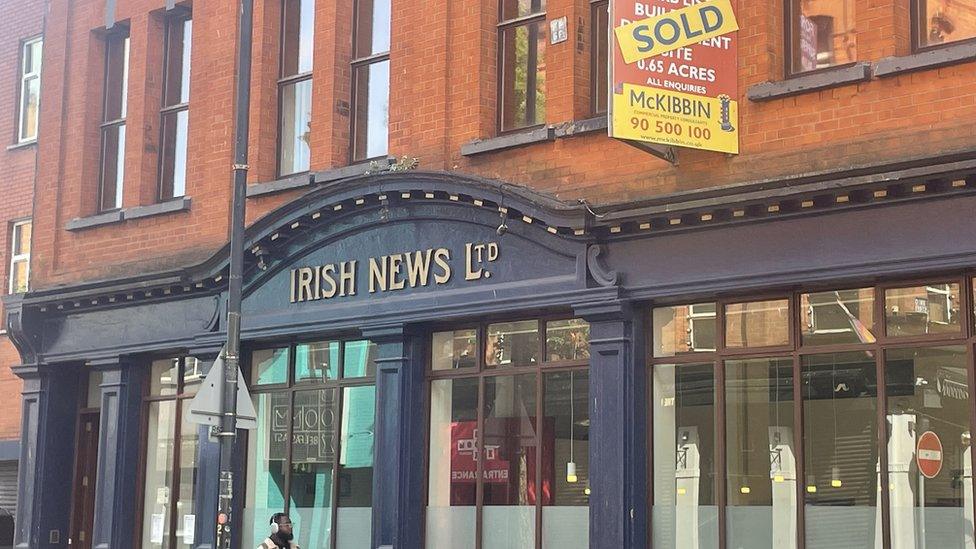
The Irish News has left its Donegal Street office
Almost 23 years - that's how much of Gary McDonald's working life has been spent at 113-117 Donegall Street in Belfast.
It's a fraction of the almost 120 years the Irish News has been based there, but it makes up half of his 44-year journalism career.
This week Mr McDonald and his colleagues said goodbye to the Irish News's home for more than a century.
"I will miss absolutely miss this place with a passion," he said, reflecting on an end of an era - not just for the Irish News, but also for the small surrounding area which used to be known as Belfast's Fleet Street.
Throughout much of the 20th century, Northern Ireland's top newspapers were based in Donegall Street or nearby - now, with the Irish News's departure for modern office space on College Street, they have all left.
The Grade B2-listed building has been sold to Ulster University.
Noel Doran, the newspaper's editor, told Good Morning Ulster: "This is a very special day in the long history of the paper.
"It's a wonderful building; so atmospheric [and] steeped in newspaper folklore. But it's very big and very old fashioned."

Irish News editor Noel Doran said the paper was moving to the next chapter in its history
He said the move has been tough for the staff, adding that was "another chapter and in the long history of the Irish News".
Mr McDonald, the newspaper's business editor, said it was said for him "at the tail end" of a 44 year career.
In its heyday, Donegall Street its surrounds were home to the Belfast Telegraph, News Letter, Irish News and The Northern Whig.
Some national papers also had satellite offices in the area.
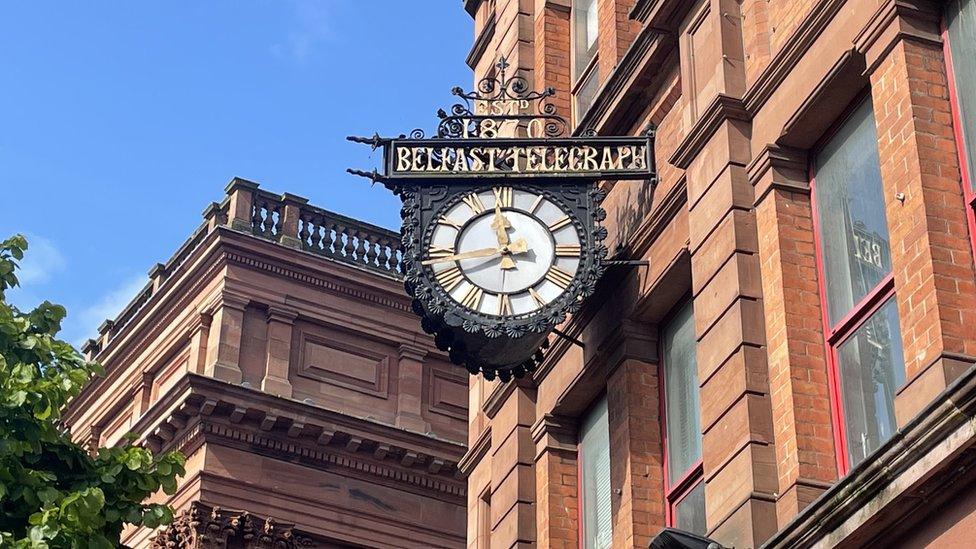
The Belfast Telegraph had offices on Royal Avenue
The Northern Whig ceased publication in 1963 while the News Letter moved to another city centre location in the mid-1990s before later moving again.
The Belfast Telegraph sold its historic office on Royal Avenue in 2016.
This concentration of prominent newspapers drew the comparison to London's Fleet Street - the historic home of many national UK titles.
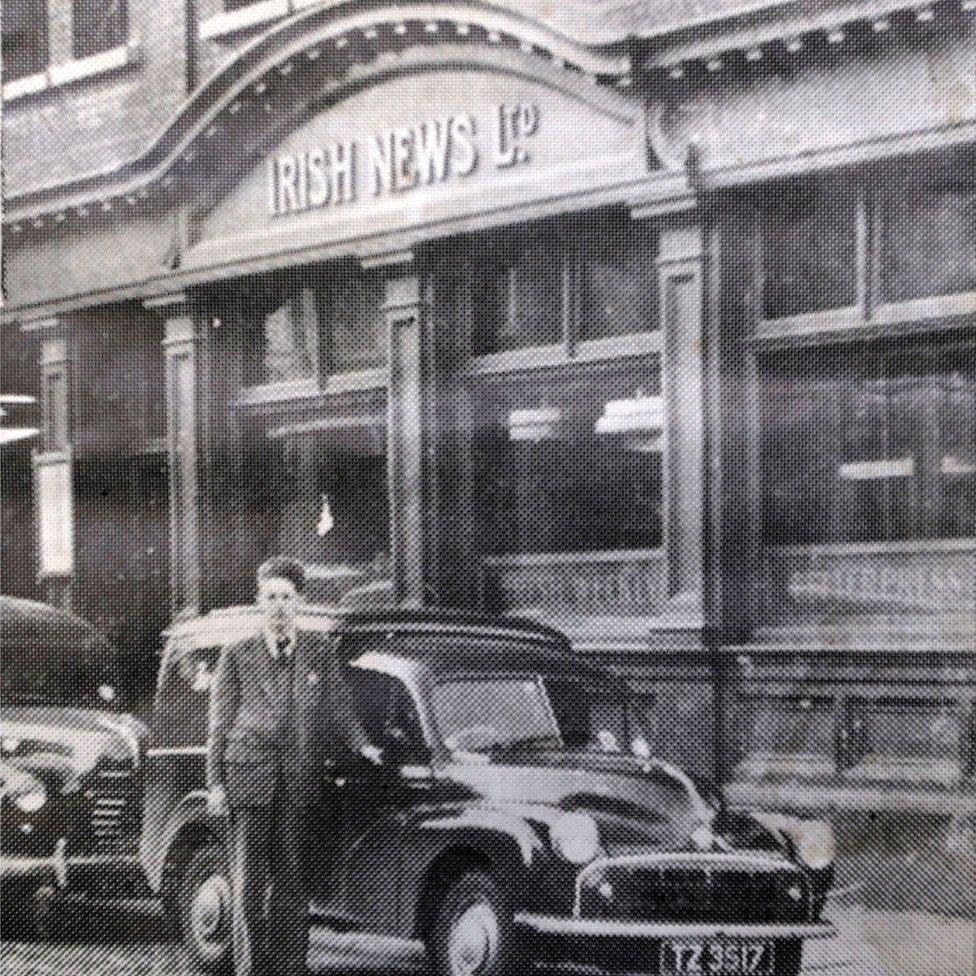
Generations of Northern Ireland's journalists worked in Donegall Street
Hugh Jordan, who worked at the Sunday World for 30 years, said it was a vibrant street.
"It was a great interaction because the Belfast Telegraph ran from early morning to late at night and all the time during the day and night the reporters and editors were bumping into each other, swapping stories, swapping ideas, and it was non-stop for most of the 24 hours in the day," he said.
These interactions often took place in the pubs dotted throughout the area, former Belfast Telegraph journalist Deric Henderson recalled.
"The pub culture was so much a part of that whole era," he said.
Mary Kelly, a journalist who worked at various outlets, including the BBC and Irish News, added: "The Front Page was the bar across the road and it was handy for all the offices, but it was also handy when you were covering the crown court on the Crumlin Road.
"So you could dander down at lunch time and have your lunch and a swift half, if you were that way inclined."
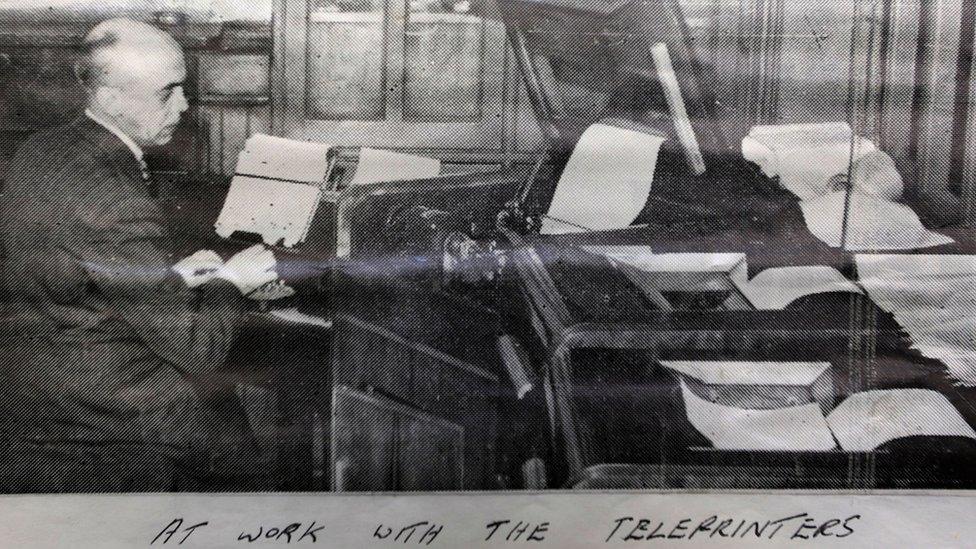
Technology has transformed the industry
Hugh Russell, the Irish News's deputy picture editor, said journalism was totally different from when he started at the paper 40 years ago.
"Back in the early 80s we were working with film as photographers, it's all digitised now," he said.
Photographing Gerry Conlon as he emerged from the Old Bailey after his acquittal is one of Mr Russell's most memorable moments.
Mr Conlon spent 15 years in prison after being wrongly convicted of the Guildford pub bombings.
However, covering some of the worst periods of the Troubles also took its toll.
"I honestly don't think you realise what you were going through," he said.
"We sat down quite recently and there were four or five photographers who'd worked over that period of time and it was only when we got talking to each other we realised what we had been through.
Ms Kelly said being a journalist during this period was "never, ever an easy job to do".
"Most of the times there would be somebody killed overnight and your job the next day was to go an interview the family and ask if there was a photo that could be used in the paper," she explained.
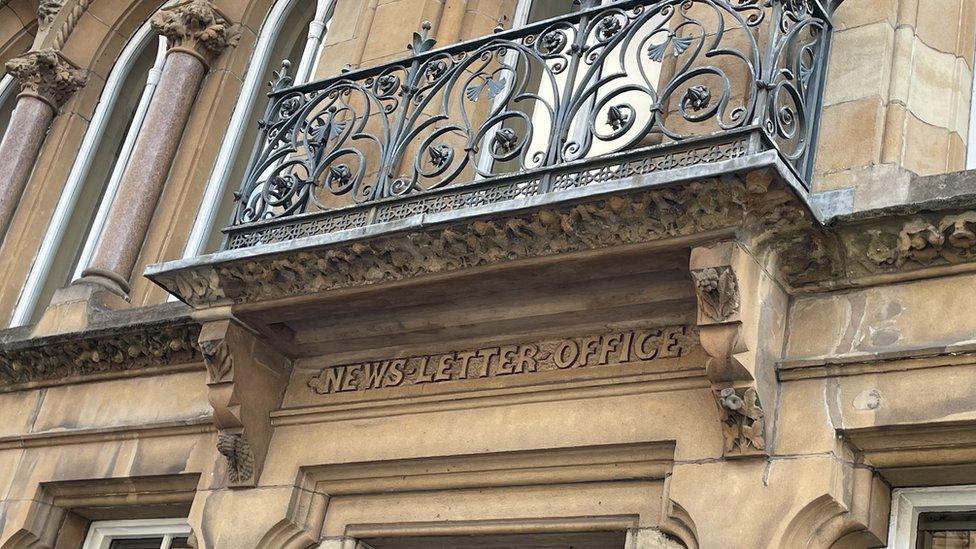
The News Letter left Donegal Street in the 1990s
The emergence of digital news, and the resulting drop in newspaper sales, has changed the industry.
"The movement of the Irish News to new premises, that's just the way journalism is moving," Mr Henderson said.
"The print industry was basically the primary source of information back in those days, but things have changed quite dramatically."
While many old hands can be nostalgic for aspects of their early days in journalism, news outlets are embracing the opportunities of the digital age.
Susan Thompson, the Irish News's digital editor, said: "We publish across a lot of platforms and we reach people from this island and from abroad.
"This move to a state-of-the-art building reflects our ambitions and reflects how seriously we're taking the digital transformation."
Related topics
- Published27 March 2023
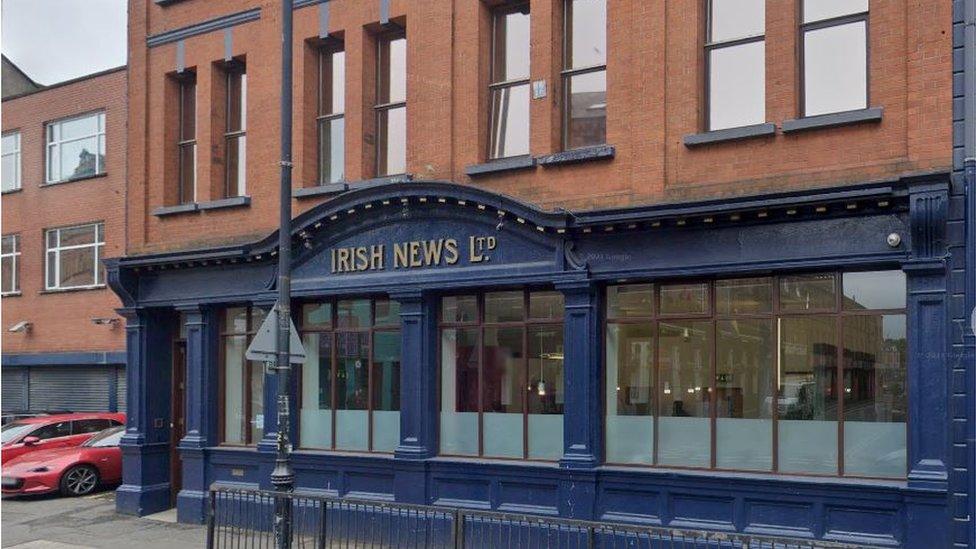
- Published5 February 2016
